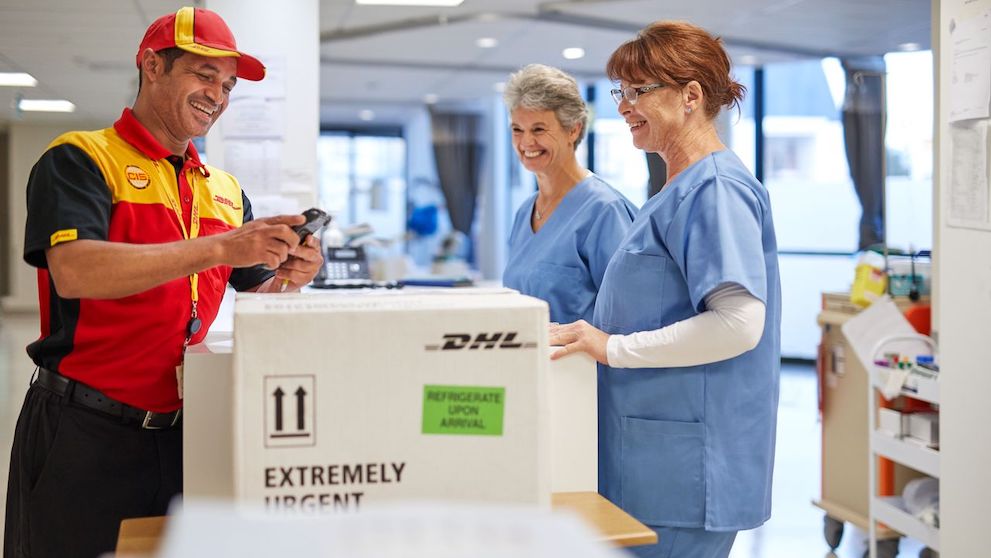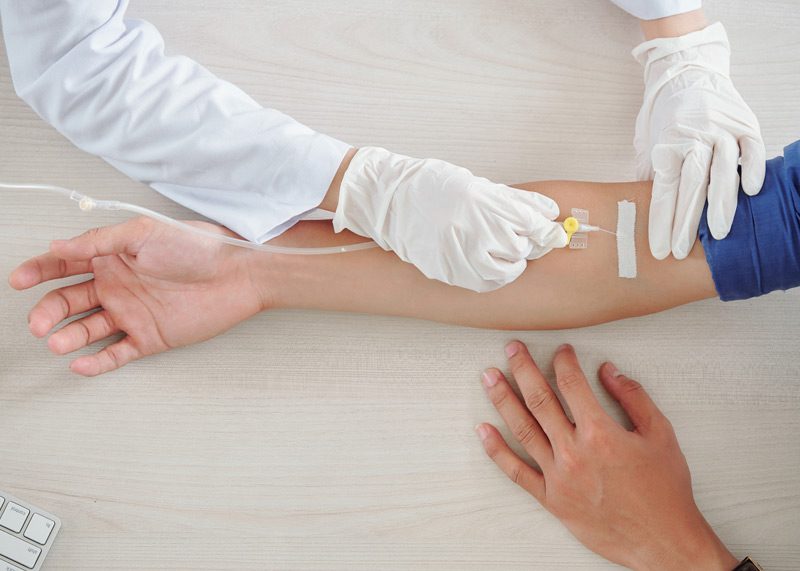€2 Billion for the Bloodstream of Global Healthcare: Inside DHL’s Bet on the Future of Life-Saving Logistics
The Next Battlefront in Logistics: Inside DHL’s Global Healthcare Gamble
As the world’s most critical therapies push the limits of science, DHL is betting €2 billion that it can be the bloodstream connecting patients with life itself.

In an announcement with sweeping implications for healthcare, logistics, and global trade, DHL Group unveiled a five-year, €2 billion investment to bolster its newly branded DHL Health Logistics. This move—part of its larger “Strategy 2030” roadmap—signals a radical pivot from legacy logistics toward a specialized, high-stakes frontier: transporting ultra-sensitive medicines, gene therapies, and clinical trial materials that must arrive not just quickly, but precisely.
"Logistics is no longer about getting boxes from A to B,” said one industry analyst. “It’s about ensuring a vial of therapy doesn’t miss its patient by a single degree or a single hour.”
Half of the €2 billion war chest is headed to the Americas, with the rest split evenly between Asia Pacific and EMEA—regions identified for both current healthcare demand and future demographic surges. Beyond building infrastructure, the strategy is aimed at reshaping the company’s DNA, threading regulatory rigor, cold chain innovation, and digital precision through every node of its healthcare supply chain.
Precision, Cold Chains, and the New Infrastructure of Healing
From Steel and Software to Stem Cells and Synapses
In temperature-controlled facilities humming across 130 countries, DHL is laying down the hard and soft infrastructure to move not just goods, but hope.
Good Distribution Practice (GDP) refers to the quality standards for the sourcing, storage, and transportation of medicinal products for human use. Compliance with GDP ensures the quality and integrity of pharmaceuticals are maintained throughout the supply chain, safeguarding patient health.
The core of the investment focuses on expanding GDP-certified Pharma Hubs, outfitted for multi-temperature shipment lanes critical for pharmaceuticals, biologics, and next-gen therapies. These aren’t warehouses in the traditional sense—they’re kinetic command centers engineered for continuous motion, precision, and resilience. When complete, the network will span over 2.5 million square meters of temperature-controlled space.
Complementing the fixed assets, the company is commissioning an undisclosed number of new temperature-controlled vehicles and deploying advanced packaging systems—both passive (insulated containers) and active (powered cold units)—to handle payloads ranging from +25°C to cryogenic levels below -150°C.

But steel and silicon are only half the story. “The sophistication in packaging and transport is now a matter of medical ethics,” said one logistics specialist. “A failed delivery could mean a delayed cancer treatment. There’s no margin for error.”
To close the data gap in complex, multi-jurisdictional supply chains, DHL will also implement new IT systems that offer end-to-end visibility—ensuring not only compliance with national and international regulations but also the real-time assurance that a therapy’s integrity has been preserved from lab to patient.
Why Now? Why This Sector? Why DHL?
The Strategic Rationale Behind a Risky but Calculated Leap
DHL’s move is not speculative—it’s structural. The life sciences and healthcare logistics market is entering a phase of exponential complexity and volume.
Table: Projected Growth and Key Insights for the Global Healthcare Logistics Market, Biologics, and Cell/Gene Therapy Segments
| Segment | Market Size Projection | CAGR | Key Drivers |
|---|---|---|---|
| Global Healthcare Logistics | USD 93.9B in 2024 to USD 335.85B by 2037 | 10.3% (2025–2037) | Globalization of pharmaceutical manufacturing, demand for temperature-controlled logistics, advanced tech integration. |
| Biologics Logistics | Included within healthcare logistics market growth | N/A | Rising biologics production, need for stringent temperature management, expansion of personalized medicine. |
| Cell/Gene Therapy Logistics | USD 1.58B in 2025 to USD 2.44B by 2029 | 11.5% (2025–2029) | Personalized medicine growth, increasing clinical trials, strict temperature/time controls, regulatory compliance. |
Key growth drivers include:
- A surge in clinical trials, which increasingly rely on global patient pools and decentralized delivery.
- The rapid ascent of biopharma, which demands cold chain mastery to preserve biologics and monoclonal antibodies.
- Breakthroughs in cell and gene therapies, where live tissue must be shipped globally with zero tolerance for thermal deviation.
Table summarizing the unique logistical challenges of cell and gene therapies and their key considerations.
| Challenge | Description | Key Considerations |
|---|---|---|
| Temperature and Time Sensitivity | Requires ultra-low temperatures and strict timelines to maintain product viability. | Ensure cryopreservation and rapid transportation to avoid degradation. |
| Chain of Identity and Custody | Autologous therapies demand traceability to ensure patients receive their own cells. | Implement robust tracking systems for end-to-end documentation. |
| Cold Chain Logistics | Transporting living cells requires specialized equipment and temperature control. | Use dry ice, liquid nitrogen, and validated shipping protocols. |
| Scalability and Manufacturing | Processes are resource-intensive, expensive, and difficult to scale for broader access. | Develop scalable manufacturing models with consistent quality control measures. |
| Patient-Specific Supply Chain | Personalized treatments require coordination across multiple stakeholders. | Optimize scheduling between patients, clinics, and manufacturers. |
| Regulatory Compliance | Strict oversight is required for transport, packaging, and temperature standards. | Adhere to health authority regulations for logistics and documentation. |
| Demand Planning | Predicting demand is difficult due to high costs and limited treatment centers. | Employ just-in-time manufacturing with precise forecasting methods. |
| Risk Mitigation Strategies | Risks include shipping delays, equipment failures, or process errors. | Implement contingency plans and redundant systems to address potential disruptions. |
DHL sees these complexities not as threats, but as differentiators. With €5 billion in revenue already attributed to life sciences logistics in 2024 and an expected additional €5 billion by 2030, the investment is underpinned by real commercial gravity.
The recent acquisition of CRYOPDP, a specialty courier with expertise in high-stakes clinical trials and cryogenic transport, gives DHL a surgical edge in a market where competitors like FedEx and UPS are still building specialized capabilities.
“Healthcare logistics is the final frontier for premiumization in supply chains,” noted a sector consultant. “DHL is making a clear play to own that space.”
The Macro Story: Navigating Weak B2B Volumes and Economic Crosscurrents
A Defensive Play Masquerading as Aggression
Behind the bold announcement lies a balancing act. DHL’s global revenue rose to €84.2 billion in 2024, a modest 3% lift year-over-year. However, EBIT declined by 7%, and macroeconomic headwinds—particularly in Europe—have strained business-to-business volumes.
Table: DHL Group Revenue and EBIT Trends (2019–2024)
| Year | Revenue (€ billion) | EBIT (€ billion) | Key Notes |
|---|---|---|---|
| 2019 | 63.3 | 4.1 | Pre-pandemic baseline. |
| 2020 | 66.8 | 4.84 | Record-breaking year driven by eCommerce. |
| 2022 | 94.4 | 8.4 | Peak performance year. |
| 2023 | 81.8 | 6.3 | Decline due to weak global economy/trade. |
| 2024 | 84.2 | 5.9 | Revenue grew by 3%, but EBIT fell by 7%. |
Yet the group still generated €3 billion in free cash flow, giving it the dry powder to invest without resorting to external debt or sacrificing dividends. This is where DHL Health Logistics fits as both a growth engine and a stabilizer.
“Traditional mail and e-commerce fulfillment are cyclical. Life-saving therapies are not,” said a market strategist. “This is a shift toward revenue with higher stickiness and regulatory barriers.”
To reinforce its position, DHL is also executing a €1 billion cost-savings program under the “Fit for Growth” banner. The painful but surgical reduction of roughly 8,000 jobs in Germany is a clear signal: the company is trimming fat in lower-margin segments to feed the lean muscle of its future-facing healthcare vertical.
Risks Beneath the Surface: Execution, Regulation, and Rivalry
Is DHL Ready for the Complexity It’s Courting?
While the roadmap is clear, the path is treacherous.
Execution risk looms large: scaling ultra-sensitive infrastructure across diverse legal regimes and temperature zones is a logistical Rubik’s cube. Even with CRYOPDP onboard, integration of processes and systems across borders is a potential sinkhole.
Geopolitical and economic volatility—from inflation to trade restrictions—could stall rollout timelines or suppress demand in key growth markets. And while DHL is first out of the gate with this level of commitment, competitors are not far behind. FedEx and UPS are racing to deepen their own pharma networks, and regional players with nimble models could undercut pricing in Asia and Latin America.
Regulatory risk is also elevated. Handling live therapies and clinical samples requires compliance with a labyrinth of evolving national rules. A single lapse in GDP compliance could cascade into lawsuits, damaged reputations, and loss of licensure.
Finally, IT systems designed to provide “end-to-end visibility” are themselves vulnerable. Data breaches, cyberattacks, or system integration failures could compromise not only client trust but also patient safety.
The Future of DHL—and Possibly the Industry
Setting the Gold Standard for Healthcare Logistics?
What DHL is attempting goes beyond growth. It’s attempting standard-setting.
If the bet pays off, DHL will not only own more market share—it may reshape what the world expects from healthcare supply chains. The company could become a preferred partner for government health agencies, multinational pharma giants, and decentralized clinical trial platforms.
And if its investment in real-time tracking, digital twins, and cold chain optimization yields additional IP, the group could even monetize these tools by licensing tech to smaller players—adding a software dimension to its hardware-heavy business.
One logistics expert offered a long-range view: “In 10 years, this move could be remembered not just as a smart capital allocation, but as the inflection point when logistics became as critical to health outcomes as the therapies themselves.”
A Calculated, Cold (Chain) Bet on Human Lives
In a world where mRNA vaccines are shipped in dry ice and CAR-T therapies travel thousands of miles to reach a single patient, logistics is no longer background infrastructure—it is frontline healthcare.

DHL’s €2 billion commitment isn’t just about warehouses and trucks. It’s a statement: that the future of medicine will be as much about movement as molecules. And for now, DHL intends to lead that movement—cold, fast, precise, and on time.
For investors, the message is equally clear: this is a long-term structural play on the rising, non-cyclical demand for high-integrity, specialized logistics. Execution will be everything. But the potential payoff? Not just profit—but permanence in one of the most defensible verticals in global trade.
